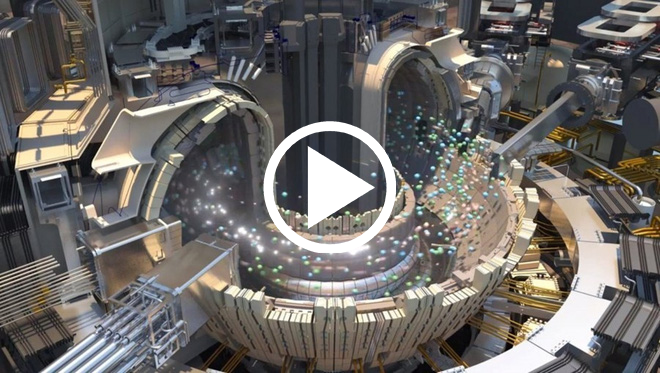The problem of the global energy crisis may be about to be answered.
Nuclear fusion has traditionally been used as the basic scientific principle of thermonuclear warheads. But theoretically, the same technology that powers weapons of mass destruction could also be used to power human cities. And if all goes as planned, the international thermonuclear experimental reactor (ITER) will begin its first test this summer, marking a major turning point for all science.
Because if we can safely build and operate fusion reactors, we can almost certainly solve the global energy crisis. But it will certainly be a big challenge.
When the nuclei of two atoms merge, they release an incredible amount of energy. The big idea behind a fusion reactor is to use a relatively small amount of energy to release a relatively large amount of energy. This is also how the sun and other stars work – why they are so bright and give off so much heat.
Obviously, recreating the universe in the laboratory is an extremely complex task. But it’s basically about finding the right materials and figuring out how to create the response we want at the appropriate and useful scales.
Scientists plan to start operational testing of ITER at low power until 2025. And the first operational test will begin in June.
Specifically, EUROfusion researchers will activate the Joint European Torus (JET), a separate experiment designed to adjust the fuel and material needs of the ITER experiment before it goes into service.
The main difference between JET and ITER is in the scale. In fact, although JET came out first, the introduction of the ITER design has become an essential part of JET testing. Scientists shut down JET for several months to redesign it so that it could work with the ITER project.
In this sense, JET is a kind of proof of concept for ITER. If all goes well, it will help researchers solve important issues like fuel usage and fusion optimization.
Nuclear fusion isn’t just about giving the right answer on fuel mixes – but it really is the biggest part of the answer. The conditions for a controlled nuclear fusion are indeed much more difficult to achieve than the simple creation of a detonable warhead. However, this is more of a technical and technological issue than a security issue.
Theoretically, nuclear fusion reactors are perfectly safe. The types of hazardous radiation situations or reactor failures that can occur with fission are essentially impossible with fusion.
The real problem is that it has to do it right to generate enough useful energy. And of course, you have to control it so as not to generate too much. This is easy to do if you imagine a fusion at the scale of the nucleus 1 to 1. But even modern supercomputers struggle to simulate the fusion on a scale large enough that the energy is useful.
When JET launches this summer, scientists will have the opportunity to address several important questions. And then, in 2025, ITER will begin a 10-year service cycle where it will operate on low-power hydrogen reactions.
Meanwhile, scientists will monitor the system while exploring a multidisciplinary approach to address other growing engineering challenges. At the heart of these efforts will be the creation of machine learning systems and artificial intelligence models, capable of powering the simulations needed to scale a fusion system.
Finally, in 2035, when the ITER development team has enough data and information, they will trade the reactor source of hydrogen for deuterium and tritium, two much more powerful atoms.
If all goes according to plan, we could trade decades of energy crises for the abundance of fusion energy.


